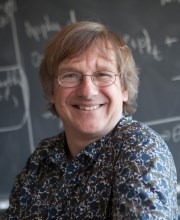Michael E. Stillman

503 Malott Hall
Ph.D. (1983) Harvard University
Research Area
Algebraic geometry, computational algebra
My main areas of interest are computational algebra and algebraic geometry, commutative algebra, and algebraic geometry. My original interest in computational methods was their application to problems in algebraic geometry. Since then, my work has proceeded in several related directions. I have studied the complexity of the algorithms (mainly Gröbner bases). I have been developing algorithms for computing in commutative algebra and algebraic geometry (e.g. computing with line bundles, computing Hilbert functions, free resolutions, sheaf cohomology, computing with Hilbert schemes). In the last few years, Peeva and I have been interested in Hilbert schemes: classical ones, toric Hilbert schemes, and parameter spaces over the exterior algebra.
A major part of my research has been the development, with Dan Grayson at University of Illinois at Urbana, of Macaulay 2, a computer algebra system for research in commutative algebra and algebraic geometry. This system has a large following worldwide, a book written about it, and has been in active development for almost ten years.
Recently, I have become interested in the application of computational algebraic geometry to problems in statistics and molecular biology. The joint paper with Garcia and Sturmfels studies ideals and projective varieties which arise naturally when studying Bayesian networks on discrete random variables.
Selected Publications
Algebraic geometry of Bayesian networks (with L. Garcia and B. Sturmfels), preprint (2003).
Toric Hilbert schemes (with I. Peeva), Duke Math. J. 111 (2002), 419–449.
Computations in Algebraic Geometry with Macaulay 2 (D. Eisenbud, D. Grayson, M. Stillman, B. Sturmfels, eds.), Springer, 2001.
Computing sheaf cohomology on toric varieties (with D. Eisenbud and M. Mustata), J. Symbolic Computation 29 (2000), 583–600.
A criterion for detecting m-regularity (with D. Bayer), Invent. Math. 87 (1987), 1–11.